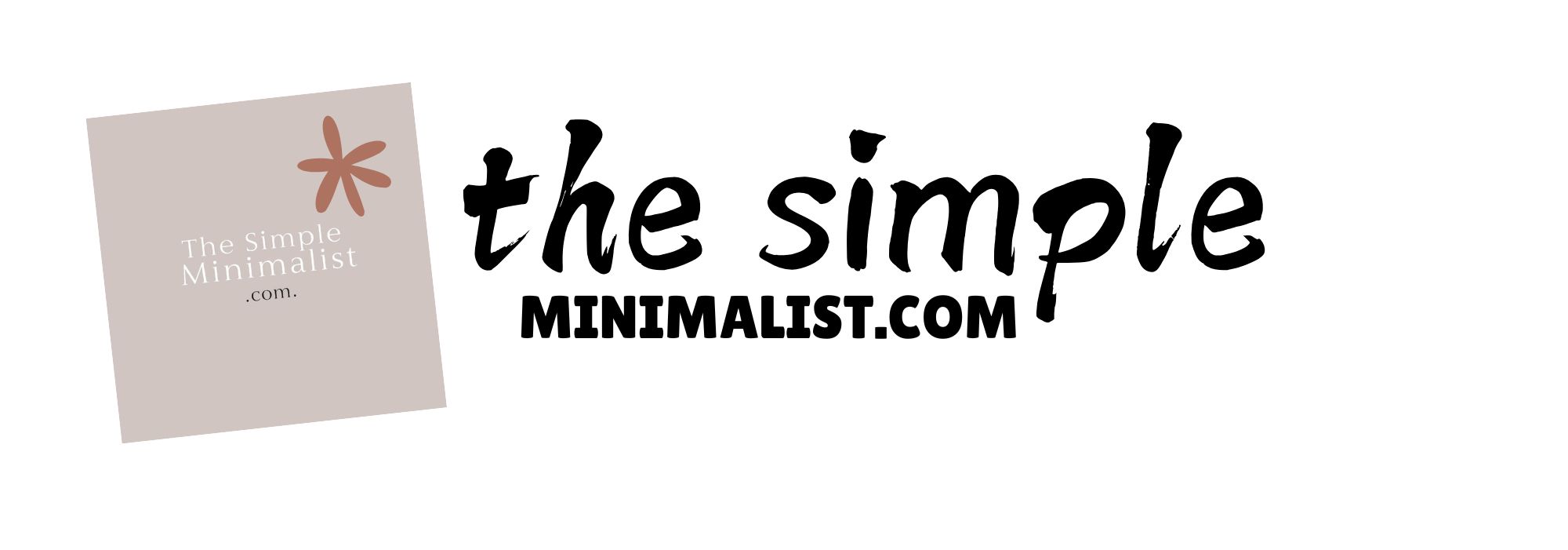Minimalist storytelling lets you craft powerful narratives with fewer words, focusing on what truly matters. By stripping away the excess, you can reveal deep emotions and connect with your audience. It's all about clarity and impact—each word should earn its place. Imagine how engaging your stories could become when you highlight the essential experiences of your characters. Curious about how to apply these principles in your writing? There's so much more to explore ahead!
Minimalist Highlights
- Focus on clarity by using simple language and cutting unnecessary adjectives to convey your message effectively.
- Emphasize strong nouns and verbs to create vivid imagery while maintaining brevity in your storytelling.
- Show emotions through actions rather than lengthy descriptions, inviting deeper reader engagement with relatable experiences.
- Revise your work to ensure every word serves a purpose, enhancing clarity and impact in your narrative.
- Incorporate white space and varying sentence lengths to create rhythm, allowing readers to absorb the essence of your story.
The Essence of Minimalist Storytelling

At its core, minimalist storytelling strips away the unnecessary, leaving only the essentials to shine.
Minimalist storytelling reveals the heart of a narrative by eliminating the extraneous, allowing the essentials to illuminate.
You're invited to explore a style that speaks volumes with fewer words. Imagine crafting a narrative that resonates deeply by focusing on emotions and experiences rather than excessive details. The beauty of minimalist decor essentials lies in their ability to create a focal point that draws attention, allowing your narrative to breathe. Just as minimalist decor emphasizes simplicity, your storytelling can thrive when you remove the clutter. Incorporating meaningful decorative items can elevate your storytelling, much like how they enhance a living space with harmony and intent. A well-placed minimalist decor item can create a sense of peace and balance, enhancing the overall atmosphere. The use of minimalist design principles can guide you in creating narratives that are both impactful and elegant.
Isn't it exciting to realize that you don't need a lot of fluff to engage your readers? Embrace this approach, and watch your stories transform.
You'll find that the essence of your narrative becomes clearer, more impactful, and truly unforgettable.
Key Principles of Minimalism in Writing

While you might think that storytelling requires a rich tapestry of words and details, minimalist writing shows you that less can truly be more. To embrace minimalism, focus on clarity. Use simple language that conveys your message without clutter. Cut out unnecessary adjectives and adverbs—every word should earn its place.
Next, create vivid imagery with fewer strokes. Instead of lengthy descriptions, choose powerful nouns and verbs that evoke emotion. Incorporating a minimalist color palette can help set the tone for your narrative. Consider using soft pastels and earth tones to evoke a sense of freshness and warmth, enhancing the emotional resonance of your story. In minimalist decor, clean lines and open spaces contribute to a calming atmosphere that can parallel the clarity you seek in your writing. Embracing minimalist design principles can also aid in creating an impactful narrative structure.
Don't forget to show, not just tell. Let your readers feel the story through actions.
Lastly, trust your audience. Give them room to imagine and engage. Consider incorporating minimalist decor ideas that can inspire the mood and enhance the narrative setting.
With these principles, you can craft narratives that resonate deeply, inviting readers to connect with each word and emotion. So, why not give it a try?
The Power of Brevity: Why Less Is More

Brevity isn't just a stylistic choice; it's a powerful tool that can elevate your storytelling. When you strip away unnecessary words, you allow your readers to focus on the heart of your message. Minimalist decor encourages a cleaner aesthetic, which can also inspire clarity in your writing. A well-designed space often reflects minimalist principles, emphasizing simplicity and function. Additionally, the use of minimalist decor essentials can enhance your environment, creating a backdrop that fosters creativity and clearer thought.
Brevity enhances storytelling, sharpening focus and amplifying emotional impact for your readers.
Think about it: how often do you lose interest in lengthy descriptions? By using fewer words, you create space for emotion and clarity. Each word you choose carries weight, making your story more impactful. Minimalist designs promote simplicity and clarity, allowing your narrative to shine.
Imagine the thrill of crafting a scene with just a few vivid details. You grab your reader's attention and invite them into your world.
Less truly is more; it creates intrigue and encourages connection. So, why not embrace the power of brevity? You might just find your stories resonate deeper than ever before! Additionally, consider how minimalist decor can inspire a cleaner narrative style that mirrors the beauty of simplicity.
Techniques for Simplifying Your Narrative

When you simplify your narrative, you invite readers to experience your story more fully. Start by honing in on your core message. Ask yourself, "What's the heart of this story?"
Cut unnecessary details that distract from that essence. Use strong verbs and vivid imagery to create a clear picture without lengthy descriptions. Short sentences can pack a punch, so mix them with longer ones for rhythm.
Engage your readers by showing, not just telling; let them feel the moment. Dialogue can reveal character and advance the plot efficiently, so use it wisely.
Incorporating minimalist decor principles can also enhance the clarity of your storytelling by removing clutter from your narrative.
Finally, always revise. Each word should serve a purpose. Remember, simplicity doesn't mean losing depth; it means finding clarity.
Are you ready to craft a powerful, streamlined tale?
Emotional Impact: Connecting With Readers Through Simplicity

Connecting with readers on an emotional level can transform your story into a memorable experience. When you simplify your narrative, you invite readers to engage deeply.
Here are three ways to create that emotional impact:
- Use vivid imagery: Paint clear pictures with fewer words. Let readers feel the warmth of a sunbeam or the chill of a winter breeze, enhancing the experience much like minimalist decor does in a well-designed space. Incorporating durable materials in your descriptions can add to the sensory experience. Additionally, using a calming color palette in your imagery can evoke a sense of tranquility.
- Show vulnerability: Characters who struggle resonate. Share their fears and dreams, and watch readers connect with their journey.
- Elicit universal feelings: Tap into love, loss, or joy. These emotions are relatable and can bridge gaps between different experiences. Additionally, using warm tones in your writing can enhance the emotional richness of your narrative.
Examples of Minimalist Storytelling in Literature

When you think about minimalist storytelling in literature, several classic and contemporary works come to mind.
From Hemingway's succinct prose to modern short stories that pack an emotional punch, each piece shows how less truly can be more.
Isn't it fascinating how poetry can capture so much with just a few carefully chosen words? This echoes the philosophy of embracing simplicity, which resonates deeply in both storytelling and design.
Classic Minimalist Works
Classic minimalist works in literature offer a powerful reminder that sometimes less truly is more.
These stories, with their sparse language and vivid imagery, draw you in deeply. You might find yourself reflecting on the emotions they evoke. Incorporating minimalist decor essentials into your surroundings can enhance the atmosphere while you read.
Here are three classic examples that showcase this art:
- Ernest Hemingway's "Hills Like White Elephants" – A dialogue-driven tale that hints at deeper issues between the characters.
- Raymond Carver's "Cathedral" – A beautiful exploration of perception and connection through simple interactions.
- Samuel Beckett's "Waiting for Godot" – A profound examination of existence through minimal action and dialogue.
Each piece invites you to ponder, encouraging you to find meaning in the spaces between the words. This allure of minimalist decor extends beyond literature, influencing various forms of artistic expression.
What do you think they say about life?
Contemporary Short Stories
While many contemporary short stories embrace minimalist storytelling, they often reveal profound insights about everyday life and human relationships.
Think of authors like Raymond Carver or Lydia Davis, who capture the essence of moments with fewer words. Their stories might seem simple, but they resonate deeply, making you reflect on your own experiences.
You'll find characters facing ordinary challenges, yet these situations spark powerful emotions. Why does a brief encounter linger in your mind? It's about the connections we share and the feelings we evoke.
When you explore minimalist short stories, you'll discover how much can be said with so little. So, pick up a story, and let these concise narratives inspire you to see life in a new light.
Poetry's Concise Impact
Poetry packs a powerful punch in its ability to convey deep emotions and vivid imagery using just a few carefully chosen words. You can feel the weight of life in a single line, connecting you to the poet's heart.
Here are three reasons why poetry's concise impact is so enthralling:
- Brevity: Each word matters, creating an intense experience that often lingers in your mind.
- Imagery: Vivid images leap off the page, painting scenes that resonate with your own life.
- Emotions: With fewer words, the feelings hit harder, inviting you to reflect on your own experiences.
Tips for Practicing Minimalism in Your Writing

Embracing minimalism in your writing can transform your storytelling into something truly powerful. Start by cutting unnecessary words. Ask yourself, "Does this add value?" If not, let it go.
Focus on strong verbs and vivid imagery; they carry weight without extra fluff. Try shorter sentences for impact, and don't shy away from white space—it gives your words room to breathe. Incorporating light-colored decorations can create a serene writing atmosphere that enhances creativity. Additionally, consider how a limited color palette can influence the mood and clarity of your writing space.
Strong verbs and vivid imagery enhance your writing. Embrace shorter sentences and white space for impactful storytelling.
Experiment with dialogue; real conversations are often concise and engaging. Consider your audience, too. What emotions do you want to evoke? Let those feelings guide your choices.
Finally, read your work aloud. Does it flow? Is it clear? With practice, you'll discover that less can indeed be more, leading to a more compelling narrative that resonates deeply with readers. Additionally, incorporating minimalist decor items can inspire a clearer and more focused writing environment.
Frequently Asked Questions
Can Minimalist Storytelling Be Applied to Different Genres?
You can apply minimalist storytelling to any genre.
Whether it's mystery, romance, or science fiction, stripping down to the essentials can create powerful narratives.
Think about how fewer words can evoke strong emotions or sharpen your characters.
It challenges you to focus on what truly matters.
Have you ever considered how a simple phrase can resonate deeply?
Embrace the challenge and see how your stories transform with this bold approach!
How Do I Overcome Writer's Block With Minimalism?
When you're facing writer's block, think of your ideas as a garden.
You don't need to plant a forest; start with a single seed. Focus on one clear image or emotion, and let that guide your words.
Write down what you feel, even if it's just a sentence. Each small effort brings you closer to blooming into a beautiful narrative.
What Are Common Mistakes in Minimalist Storytelling?
When you immerse yourself in storytelling, it's easy to make a few common mistakes. You might over-explain or use too many adjectives, which can clutter your message.
Sometimes, you forget to trust your reader's imagination. Remember, less is often more! Focus on the essentials and let the emotions shine through.
Are you painting a vivid picture with your words? Embrace simplicity, and you'll create powerful connections that resonate deeply with your audience.
Is Minimalist Storytelling Suitable for All Audiences?
You know what they say, "Less is more."
While minimalist storytelling can resonate deeply, it doesn't fit every audience. Some folks crave rich details and complex plots. It's important to gauge your audience's preferences.
If they enjoy brevity, go for it! But if they love a lush narrative, consider blending styles. Engaging your readers means understanding what they want, so keep their tastes in mind, and you'll craft stories that truly connect.
How Can I Transition From Traditional to Minimalist Writing?
Shifting to minimalist writing can be exciting!
Start by identifying your core message—what do you really want to say?
Then, trim unnecessary details; every word should serve a purpose.
Try using simple, vivid imagery that sparks emotion.
Write short sentences for impact, making your point clear and direct.
Don't hesitate to experiment; it's okay if it feels different at first.
Are you ready to embrace this fresh approach and let your creativity shine?
Conclusion
In the world of storytelling, less really can be more. By embracing minimalist techniques, you'll find your words can dance on the page, inviting readers into a deeper connection. Think about the stories that have touched your heart; weren't they simple yet profound? So, why not give it a try? Strip away the excess and let your voice shine through. With each word, you're crafting magic—one that resonates long after the last sentence is read.




